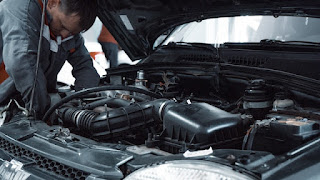Master How To Use Car AC In Summer And Winter
When the temperature outside seems to be boiling in the summer or the winters seem to be freezing cold, understanding how to use car AC functionality is crucial, as it is impossible to stay in a car without proper cooling for even a few minutes.
To meet consumer demands, car companies are becoming more elaborate with cooling; innovative dual-zone cooling and vents for backseat passengers are becoming more commonplace. Still, complaints regarding cooling continue to be the top issue for most individuals.
Issues related to optimization and maintenance often result in insufficient cooling, prompting the need for some useful tips and tricks to address these problems. In this blog, you will learn everything there is to know about how to use a car AC economically and optimise it for maximum efficiency.
What Are The Principles Of AC?
How an AC system works is an art of beauty because it efficiently removes all the heat from the cabin and cycles in the cool breeze. Before one can fully understand how to use car AC properly, it is essential to learn about all the parts and what their functions are for cooling:
- The compressor is the essential component of the AC and pumps the refrigerant gas to the condenser for condensation.
- Refrigerant gas is the essential substance that absorbs the heat from the air and causes the air to cool down.
- Condenser: The condenser’s job is to remove all the heat from the refrigerant gas and ensure it cycles back to its cool state.
- Expansion valve: The job of the expansion valve is to ensure the fluid flow between the condenser and evaporators remains consistent.
- Evaporator: The job of the evaporator is to absorb all the moisture and heat to keep the air cool and dry.
- Receiver-dryer: This equipment ensures the refrigerant remains pure without dirt or moisture clogging it up.
The fundamental principle on which a car AC operates is that the refrigerant gas constantly changes from gaseous to liquid and then back to gaseous. If one is not clear on the basics, then learning how to properly use AC in a car is impossible.
Maintaining the AC Systems
A proper AC system maintenance routine is an integral part of ensuring that the cooling in a car remains adequate and efficient. Most owners need the proper know-how, and that is where the most common issues tend to spring up unannounced.
Cleaning Out the Air Filters
Every car owner makes a lot of effort to clean the outside of their cars, but internal cleaning is equally important. Road pollution from vehicles, dust, and pollen in the air can easily clog the air filters, quickly making them dirty.
Without good airflow in the AC, there’s simply no cooling in the cabin, and that can be quite a frustrating experience. The key reason behind weak airflow is often a blocked air vent due to something in the chamber. Another reason could be an air filter that has not been cleaned yet.
Blower Motor
The fan that blows cool air at you is malfunctioning; either the fuselage is blown, or the resistor is causing trouble, and it might be time to change it. Other issues could be debris getting stuck in the motor, leading to the blower having low airflow and requiring proper cleaning.
Check on the Refrigerant Gas
Like all resources, refrigerant gas also gets exhausted by constant usage and frequently requires refilling. If the gas seems to be running low, it will exert more pressure on the car’s performance and affect the mileage.
One might be running low on the refrigerant, the compressor may be malfunctioning, or there might be a damaged condenser leaking. It might be time to get it checked and get them replaced by a professional car mechanic. Only try to DIY if you have a good amount of experience.
Condenser
Ensuring that the condenser remains clean and free from dust or debris is essential to ensure the condenser remains effective.
Check the Car Engine
The car engine plays a direct role in the proper AC functioning, with the engine belt radiator playing a crucial part. Ensure adequate lubrication so that your car engine is not the reason why cooling is dragging in your car.
The blower, compressor, or fan may have some mechanical issues, leading to constant grinding and squealing noises that can be problematic. It is possibly linked to loose or damaged belts that are causing issues, or the compressor is malfunctioning due to issues in the piston that manages the coolant.
Electrical Issues
Many electrical components are embedded within the car’s AC unit to regulate the blower’s speed. In modern vehicles with dual-zone cooling and other sophisticated features, a failure in the transistors is far more common than ever before. Electronic issues, such as a blown fuse, control module failure, or switch malfunction, are often the points of failure.
Owners may notice that specific vents are sending out cool air, while others are releasing hot air. There is a clear issue with the blend door actuator, which helps circulate the air and is malfunctioning, leading to some vents releasing hot air while others release cool air. Other reasons can be a leak of the refrigeration gas, or it is simply running low.
If there is loose wiring, the problem can be solved within minutes; however, replacements can be costly, depending on the car model.
If you face any issues, you can get air conditioning service at Acton at an incredibly affordable price.
How To Use Car AC In Summer Effectively
Enduring hot summers in a car can be a challenge, as vehicles can quickly turn into heat traps. Running the AC at full blast may not always be sufficient, causing passengers to feel sweaty and anxious due to the time it takes to cool the car. Effective cooling, however, is an easily solvable problem once you grasp the essential principles of how temperatures change.
Here are some simple tips for using your car’s AC effectively in the summer:
- Avoid Direct Sunlight: The inside of a car can heat up significantly due to direct sunlight. Parking your vehicle in shade, under a tree, or even in a cool basement can expedite the cooling process when you turn on the car’s AC. This simple trick is often overlooked but can make a big difference.
- Ventilation: High-temperature air is lighter by nature. Opening the doors, windows, or even the hood allows the hot air to escape from the cabin. Once most of the hot air is out, you can turn on the AC for more efficient cooling.
- Recirculate Cabin Air: Many people use the outside air intake to get fresh air, but this can be inefficient for cooling. When you switch to the recirculation mode, the AC uses the cabin air, which cools more efficiently and helps maintain a comfortable temperature.
- Use Climate Control: Contrary to common belief, setting your car’s AC to the lowest temperature doesn’t necessarily provide the best cooling. Most government authorities recommend a temperature range of 22°C to 24°C...[continue reading]





Comments
Post a Comment